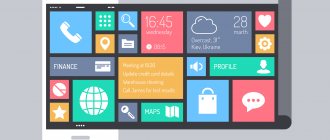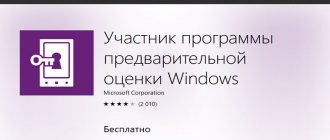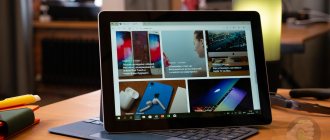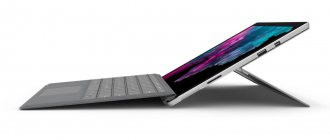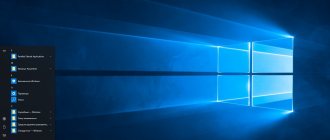All Windows Phone smartphones will die completely in December
Windows 10/16/2019 | 3
As you know, until recently, full-fledged smartphones came onto the market not only on Android and iOS, as is happening now, but also those based on BlackBerry OS and Windows Phone. However, not a single trace remains of the former greatness of these platforms, because now they are only part of history, and any mobile devices based on them are no longer produced. More than two years have passed since Microsoft stopped supporting the WP platform, during which it has not released a single update for them. Everything indicates that smartphones based on this have absolutely no future, and today, October 16, 2019, everyone was able to verify this for themselves.
So, in particular, the American corporation Microsoft publicly announced that as of December 16, 2020, its proprietary store application called Windows Phone Store will stop working in any way. Installing any applications through it is the only possible way to install software on mobile devices running WP. In practice, this means that users of outdated mobile devices will be deprived of the ability to install any programs and games. The Play Store will become unavailable on Windows Phone 8.1 at the end of this year, and then, after some period of time, it will also stop working on Windows 10 Mobile.
In this regard, Microsoft recommends that all users consider replacing their mobile device with a new one running Android or iOS. We are talking about products released to the market under the Nokia and Microsoft brands. With the cessation of support for the branded software store, literally everything will stop working, because without it, any smartphones will lose their full functionality, losing the ability to run and use third-party software. Support for Windows 10 Mobile in terms of updates will be provided until December 10, and the company's software store for it will work for some additional time.
The following mobile device models were affected: Lumia 430, Lumia 435, Lumia 532, Lumia 535, Lumia 540, Lumia 635, Lumia 636, Lumia 639, Lumia 640, Lumia 640 XL, Lumia 730, Lumia 735, Lumia 830, Lumia 929, Lumia Icon, Lumia 930 and Lumia 1520. All owners of these, without any doubt, are definitely out of luck, because you hardly need a modern smartphone without the ability to install any programs and games from third-party developers on it. However, users of the WP platform are no strangers to restrictions, because many applications have always been unavailable for it, including such popular and well-known ones as Google Chrome, Gmail, YouTube, and many others.
Earlier, information appeared that the Pegasus project completely changes the appearance of Windows 10, making it much better.
Attention! Until July 26, everyone can receive a Xiaomi Mi Band 5 sports bracelet for free, spending only 2 minutes on it.
Join us on Google News , Twitter, Facebook, VKontakte, YouTube and RSS to stay up to date with the latest news from the world of future technologies.
AKKet.com Telegram channel
Receive notifications about new materials directly in the messenger - on iOS, Windows, Android and Linux.
LumiaMicrosoftNokiaWindows PhoneSystemsSmartphones
Microsoft finally “buried” Windows Phone and recommended switching to Android and iOS
Maximus Yang/Flickr
Microsoft will end support for Windows 10 Mobile, the latest operating system in the Windows Phone family, in December 2020, and will end support for some smartphones even earlier, in June 2020. Microsoft's support portal states that the company recommends that its customers switch to mobile devices running the Android and iOS operating systems.
Windows Phone is the latest family of operating system platforms developed by Microsoft for mobile devices. The system was introduced in 2010, but over the years of its existence it has not been able to compete with Android and iOS. Windows Phone's market share fell from four percent in 2014 to 0.3 percent at the end of 2020, and in statistics for the first quarter of 2017, the analytical portal Gather generally stopped separately indicating the share of the operating system, relegating it to the “Other” section, which among new devices sold was only 0.2 percent, with Android and iOS accounting for 86.1 and 13.7 percent, respectively.
In 2020, Microsoft ended support for Windows Phone 8.1, and now it has become known that the company is ceasing development and support of the latest operating system in the family, Windows 10 Mobile. Official support for operating system version 1709 will end on December 10, 2020 - no security updates or other patches will be released after this date. For smartphones running version 1703, such as the Lumia 640 and 640 XL, support for Window 10 Mobile will end even earlier, on June 11th.
Users will have the opportunity to save an image of the operating system with settings and applications in the cloud until March 2020, and certain services, including photo backup, will be available for another year after support ends. Microsoft representatives note that the phones will continue to work, and application developers will be able to continue releasing updates if they wish. However, the company recommends its customers to switch to devices running Android and iOS operating systems.
End of support is a common end of the software life cycle, but in some cases developers extend the support period. Windows XP is considered one of the longest-living Microsoft operating systems - it appeared on the market in 2001, and its support ended only in 2014. Because of this, many third-party software vendors were also forced to support their programs for a long time: Google Chrome for XP was supported until the end of 2020, and support for Mozilla Firefox for XP extended until the fall of 2020. Microsoft will stop supporting its other popular operating system, Windows 7, in January 2020.
Nikolay Vorontsov
What's happening to Windows Phone? Data
Well-known Windows blogger Paul Thurot tries to make sense of the latest news regarding WP - and comes to disappointing conclusions.
Paul Turot - tech expert and Microsoft blogger
Last July, Paul writes, Microsoft essentially exited the smartphone market. Now the company... has left him a little more.
- Microsoft is de facto leaving the consumer smartphone market. The company admitted its failure in this area and will now focus on corporate clients. The irony is that when Microsoft launched Windows Phone in 2010, it completely ignored the business side.
- Almost all Nokia employees who joined Microsoft in 2014 will leave the company by the end of this year. In 2016, only 1,850 “Finnish” employees will leave the company. Not so much - but most of the employees have already been fired during the two previous waves of “staff optimization”.
- Microsoft lost much more than $7.5 billion on the acquisition of Nokia. The real amount of losses exceeds $10 billion.
Any one of these three facts is enough to have a very serious impact on Windows Phone as a platform. Now, writes Paul, unlike the situation last year, there is simply nothing to analyze - everything is clear without further ado. The blogger believes that the past year, rich in unpleasant truths about the platform, has made realists out of most WP fans. Yes, there are still particularly stubborn users who are waiting for the future revival of the system. But most Windows Phone fans seem to understand exactly what the truth is.
But the truth looks like this:
- Windows Phone as a platform doesn't matter. Currently, Windows smartphones occupy less than 1 percent of the global smart phone market; they do not have many of the applications and games that a modern user needs.
- Microsoft will continue to develop Windows 10 Mobile. Not to be confused with "Lumia" - Microsoft will only develop and improve the Windows 10 Mobile operating system. Why? Because it's just a SKU (product version) of Windows 10, and because it runs on the ARM hardware that modern mobile devices run on.
- A new smartphone from Microsoft will come out... maybe. It is unclear whether this device will be released under the Lumia brand (most likely not) or under the new Surface brand.
- Relax, no one is stopping you from using a Windows smartphone. Paul complains that he gets a lot of strange comments from users - for some reason they think that he is trying to convince them not to use Windows Phone. Not at all! Thurot simply suggests that we stop worshiping Windows Phone as a promising platform and something that can be recommended to friends and acquaintances.
“If you know what you're getting into, there's no problem. But stop pretending that Windows Phone solves problems that iPhone and Android can't . These platforms are now significantly superior to Windows Phone. Sorry".
From a Windows Phone fan's perspective, essentially nothing has changed: Microsoft will still support the platform they love, and they can continue to use the devices and maybe even buy new ones in the future. For the rest of the world - and, unfortunately for WP fans, this includes 99.9% of users - not much has changed either. Most people can still safely ignore Windows Phone.
Articles on the topic:
- Windows Phone users are switching to Android in droves.
- ZDNet: Microsoft, it's time to ditch Windows Phone and move to Android.
- Microsoft will carry out a tough restructuring of the smartphone business.
- Microsoft is ignoring Windows Phone and Windows 10 Mobile.
- Terry Myerson: Microsoft is not interested in Windows Phone.
- Kantar: Windows Phone has big problems in Europe.
- Windows Phone continues to lose ground in key markets.
- PayPal is abandoning development of an application for Windows Phone.
Is Windows 10 Mobile dead?
Lately, I have often heard statements from users that the mobile version of Windows 10 is dead and we need to quickly get rid of it, but is this really so?
Let's try to understand this issue more carefully. Honestly, Windows users are amazing people and at the slightest noise they panic and say that everything is lost.
Let's start with a little history. Windows Mobile first appeared in 2000, which was based on Windows CE, which in turn appeared in 1996, after which there were as many as 6 versions of Windows Mobile, which were supported until 2012. Yes, at the beginning of the 2000s, Windows Mobile was on top, but with the advent of other mobile operating systems that were more responsive to users, the share of Windows Mobile decreased sharply, but nevertheless Microsoft supported it for as long as possible, until the release of Windows 8.
Microsoft understood that Windows Mobile needed a restart and on February 15, 2010, Steve Ballmer officially introduced the new mobile OS Windows Phone. At that time, Microsoft and Nokia entered into a cooperation agreement. Strangely enough, it coincided that the Nokia brand also needed a relaunch, and therefore, for a certain amount of money, Microsoft simply bought the Finnish mobile division. After which fruitful cooperation began. Nokia worked on its smartphones, which were magnificent in design, of course this does not apply to cinder blocks like the 920 Lumiya, but then there was its revolutionary mother wireless charging, which slightly leveled this defect. Carl Zeiss optics were the highlight of smartphones and they took pictures very well indeed, even by today's standards. Microsoft, in turn, dealt with software and exclusive support for Nokia, since in essence it was already their company. And the people who followed the tandem of these two giants were sure, including me, that the results would be simply bomb phones that would outshine all sorts of iPhones and Samsungs, but this did not happen. When Windows Phone 7 came out, they turned out to be somewhat unattractive and not very functional. And in principle, both developers and users, oddly enough, were not particularly upset. And they said that this was their first joint device and that there was more to come. And after the release of the new Windows Phone 8 platform, some work on the bugs was already visible. The smartphones looked pretty nice. The aforementioned flagship Lumiya 920, although it looked like a brick, was still popular. Afterwards, by the way, Microsoft updated the smartphone to version 925. He looked much cooler and thinner. Even I couldn’t resist then and bought a Lumia 820. The 920 was too huge for me, and the 720 was quite weak. Although Lumia 720 was the most beautiful smartphone at that time. The Lumia 820 had an excellent 8 MP camera with dual LED flash and had a good design, which is what won me over. It seems to me that it was during the existence of Windows Phone 8 that the mobile OS was at the peak of its popularity. Afterwards, Windows Phone 8.1 and the new 3rd and 4th line of Lumia smartphones were released, which were magnificent from the design side. Moderately elegant and not oversized.
Then Microsoft announced the release of Windows 10 and again renamed Windows Phone to Windows Mobile. At the end of 2020, it released smartphones of the 5th line called Lumia 950 and 950 XL - this is a kind of cosplay on the iPhone 6 and iPhone 6 Plus. The phones, frankly speaking, were not the best and had a rather buggy OS at that time. Microsoft understood that it could not provide such a system to other older smartphones, so it delayed the release of Windows 10 until March 2020, after which all 3rd and 4th line smartphones, Lumia 1520 and third-party smartphones were able to receive this coveted update. The second line of smartphones did not officially receive Windows 10 Mobile, but still, through Windows Insider, Microsoft allowed you to upgrade to version 10 without problems, but then, of course, banned the release of assemblies for these smartphones, summarizing this by saying that the smartphones were too old, but the Ten it was possible to get money from them.
So this is what I mean by all this. This story was needed to restore some consistency. To be honest, there were even skeptics who, back in the early 2000s, said that Windows Mobile was an unnecessary OS that would soon die, but almost 20 years have passed and the system is still alive. It has had its ups and downs, but there are still people who use it and don't want to give it up. Even Microsoft itself claims that it will not stop releasing builds for smartphones running Windows 10 Mobile. This is already a good sign, it would be another matter if Microsoft were silent at all, but one can hope that for a few more years mobile Windows in the form in which it is now will receive updates. Yes, my God, even Windows RT, which has tens of times fewer users than Windows 10 Mobile, still receives updates, even one owner of this tablet once told me that a menu was added to the RT version Start, as in Windows 10, while, let me remind you, the system was released in 2012, 5 years ago, and after that you will say that Windows 10 Mobile is dead? I currently have a Lumia 830, the phone came out in the fall of 2014, now it’s already 2020. About 2.5 years have passed and the smartphone is still receiving updates. Many Android smartphones cannot even afford this. Even if suddenly updates stop coming out for this platform, will the phone immediately turn into a brick? It will still work, except that there may be problems with some applications, but looking at Windows RT, which is less popular, and everyone has already forgotten about it, except Microsoft and some enthusiasts, we can say that Windows 10 Mobile will still be live a very long time.
Personally, I can say that, for example, I broke the Lumia 820 in 2014, when I was riding a bike and fell on the right side, and I had a phone in my pocket on that side and I still haven’t been able to fix it , due to the lack of the required part. The Lumia 830 has already been repaired once, albeit under warranty, but it was still there, so most likely the Lumia smartphones themselves will die faster than the mobile operating system from Microsoft.
Yes, Microsoft is preparing new smartphones that should be closer to the functionality of a full-fledged Windows 10, but in parallel, regular mobile Windows will also live, no one is going to give it up. I've been hearing for about 2 years now that the mobile system is dead. And is she dead now? No, more alive than all the living.
If we talk about problems with Windows 10 Mobile, then there is only one. These are very expensive devices. If Microsoft were to sell these devices at a loss, like the Xbox 360, for example, then the system would gain a much larger base of both users and developers. It is with the valuable that we kill two birds with one stone. Since users, looking at branded smartphones from Microsoft, still chose similar phones on the Android system, since they were cheaper and had better characteristics, and wealthier people took the iPhone because it was an iPhone. Like, if you have an iPhone, then you have succeeded in this life. And smartphones running Windows Phone and Windows Mobile were mainly purchased by enthusiasts and those people who wanted to try something new. Some gradually leave for other systems, while others return because they are accustomed to this OS.
Microsoft has taken a break for now; there were rumors about a full-fledged Windows 10 on smartphones with Intel Atom processors, but Intel curtailed their production, and now Microsoft is relying on Qualcomm, whose new chips support Windows 10 and DirectX 12 at the hardware level. ARM chips will be built into both smartphones and laptops, and thanks to the Andromeda project, the system will adapt to the device, it will even be possible to run x86 applications thanks to an emulator of this architecture.
It's up to you to switch to another mobile system or stay on Windows 10 Mobile. I am in no way defending Microsoft, since it is they who are mostly to blame in the mobile market, but even now I am completely satisfied with this system. There are plenty of applications in the store, the protection is quite good on a smartphone. What else do you need to use? If you still play games on your phone, and the games you need are not available on this OS, then most likely Windows Mobile was not suitable for you in the first place. I repeat once again - the system is not dead and may even be able to surprise you with something.
Windows Phone users, you only have 323 days to switch to Android or iOS
Anyone who, for some reason, has remained faithful to phones with the Windows Phone operating system installed will have to switch to Apple or Android.
Windows Phone is dead! What now?! After all, it would seem that this operating system died a few years ago. But no, the Windows Phone OS turned out to be so tenacious that it refused to die, despite the fact that Microsoft had long been trying to put it to rest. But this time, it seems her end is closer than ever. Microsoft announced that after December 10, 2020 there will be no new security updates and various fixes. Three months after this date, some applications will continue to function, but after March 10, 2020, all other services will be closed. It's important to note that there are devices that will die even sooner. For example, devices with Windows 10 Mobile version 1709 will be supported until the end of the term, but support for the Lumia 640 XL will remain only until June 11, 2020.
This news did not come as a surprise, but it is a big loss not only for Microsoft, which once harbored ambitions to dominate the smartphone market, but also for a considerable number of people who have come to appreciate the benefits of the Windows Phone OS and were still reluctant to switch to other operating systems. Microsoft is now officially asking remaining users to switch to Apple or Android.
The company noted that Windows 10 Mobile (version 1709) will be the last update released for Windows Phone users, and using Windows Phone will become dangerous as Microsoft will no longer track vulnerabilities and provide support.
Meanwhile, third parties may release their own updates, as has been the case with other abandoned technologies.
Microsoft released its last Windows Phone over 2 years ago.
Since then, there has been a significant drop in third-party support for Windows Phone, and Microsoft has gone to great lengths to ensure that recent Windows Phone users receive timely updates and security patches.
Perhaps now is the time to switch from Windows Phone to Android or iOS?
We don't know anything about when Microsoft will release the long-awaited Surface Phone or Andromeda, but switching to Android or iOS is the best option.
By the way, if you are having a hard time parting with your beloved Lumia, then perhaps you should take a closer look at Nokia phone models. The Nokia 7 Plus deserves special attention, but you can also buy the 8.1 or 6.1 model. Thanks to the wonderful Launcher 10 program, which turns the interface of an Android phone into a complete copy of Windows Phone, you will hardly notice the difference.
No similar materials
Mobile platforms Windows and Lumia
Windows 10 Mobile is a version of Windows 10 for mobile devices with a screen size of 9 inches or less. The OS was released in February 2020, its features included the ability to sync content with a PC, connect the device to a large screen or use it as a PC with a mouse and keyboard, and support for UWP applications.
Despite the launch of its own line of Windows smartphones under the Lumia brand, purchased in 2013 from Nokia, the overall share of Windows smartphones in the market has not reached double digits. Thus, at the peak of OS popularity, 99.6% of new devices had Android or iOS installed. By the time of the announcement of the winding down of OS development, about 80% of all Windows smartphones used Windows Phone 7, Windows Phone 8 or Windows Phone 8.1, and only 20% ran Windows 10 Mobile.
Microsoft has stopped supporting Windows Phone 8.1
Maximus Yang/Flickr
Microsoft stopped supporting the Windows Phone 8.1 operating system on July 11—about three years after the first update was released. However, the mobile version of Windows 10 has not yet been officially declared obsolete. The Verge reports this.
According to statistics, about 99.6 percent of new mobile devices run Android and iOS operating systems. Windows smartphones occupy only 0.3 percent of the sales market. However, millions of mobile phones still run on the Windows operating system, and only 20 percent of them have the modern version of Windows 10 Mobile installed. Since the remaining 80 percent of devices run Windows Phone 7, Windows Phone 8, and Windows Phone 8.1, the end of support means the end of the Windows Phone era.
Windows Phone 8.1 was a major update to the Windows Phone 8 operating system. It introduced virtual assistant Cortana and a new notification center, as well as changes to the user interface and a number of improvements to the core OS. Despite the fact that this was one of the most significant attempts to compete with Android and iOS, Microsoft failed to cope with this task and, as a result, abandoned the release of its own Lumia smartphones.
Currently, Microsoft is still supporting the Windows 10 Mobile operating system, but it is unclear what it will include going forward. The latest Windows 10 Mobile Creators Update had almost no new features. A major Windows 10 Fall Creators Update for computers is due to be released in the fall of 2017, but the company has refused to test similar functions on the mobile platform. According to rumors, there is a chance that support for Windows 10 Mobile will also end in 2020. However, Microsoft has not yet made official comments regarding the fate of the mobile operating system.
In April of this year, the company also stopped releasing updates for Windows Vista, which became available to private users in 2007. Windows XP is considered one of the company's longest-living operating systems - it appeared on the market in 2001, and its support ended only in 2014. Because of this, many third-party software vendors were also forced to support their programs for a long time: Google Chrome for XP was supported until the end of 2020, and support for Mozilla Firefox for XP will last until the fall of 2020.
Kristina Ulasovich
Update 03/15/2016
According to information that has not yet been confirmed by official representatives of Microsoft, the release of Windows 10 Mobile for devices running the Windows Phone 8.1 operating system is scheduled for March 17. On this day, updates should arrive on the following smartphones: 1520, 930, 830, 640, 640 XL, 638, 636, 535.
So far, Microsoft cannot name the exact release date of the new OS for Windows Phone smartphones, constantly pushing it back to a later date. But this should take place in the first half of 2016.
Reaction
Metro UI reviews
The Metro UI style (later renamed Modern UI[82]) and the overall interface of the operating system received positive reviews[83], including praise from ZDNet for its interface design[52]. Engadget and ZDNet have been well received by Facebook's integration with the People hub, as well as other built-in features.
Among the system's shortcomings, Mobile Review experts cite the lack of intuitiveness of the interface and the fact that device manufacturers cannot install their own dialers, browsers, keyboards and other applications[83].
Reviews of Windows Phone devices
In the review of Nokia Lumia 520 on Habrakhabr, one of the main advantages is the smooth and fast operation of the OS. The RAM capacity of 512 MB does not affect resource-intensive applications. The speed of loading pages in the browser and high performance in graphical applications are also noted[83].
Positive features also included the ability to get 7 GB of cloud storage on OneDrive and the ability to read and edit Word, Excel, PowerPoint files and OneNote notes directly on the phone[84].
In a review of the Mobile Review resource, Windows Phone devices received positive feedback for the uniform style of all applications, the completeness of the backup (SMS and recent calls are automatically pulled from cloud storage), as well as close integration with social networks Facebook and Twitter[85].
Market share
- The crisis helped WP. Sales of smartphones based on Windows Phone in Russia grew sharply at the beginning of 2020 amid the crisis. Smartphones running Microsoft's operating system have replaced the iPhone. In unit terms, Windows smartphones actually outperformed the iPhone at the end of five months of 2020, confirm Euroset representative Ulyana Smolskaya and MTS representative Dmitry Solodovnikov. The latter notes that the share of Windows devices began to grow back in December last year.
According to a report by the analytical company International Data Corporation, in 2013, Windows Phone was among the top three in the release of operating systems for smartphones and was named the platform with the fastest growth rates of market share (at the time of publication, the growth was 91% per year). Windows Phone is the third most widely used operating system in 9 markets[85].
In 2020, according to information from Svyaznoy, Windows Phone sales in Russia increased by 107%. The share of smartphones running Windows OS reached record levels for the first time in all sales history. Compared to 2014, the figure has doubled.[86]
However, according to analyst firm IDC, the market share of Windows Phone-based devices, having passed its peak in 2013 with a value of 3.4%, fell to 2.5% in the second quarter of 2014.[87] Subsequently, the share of Windows Phone only decreases, reaching 1.6% by the end of 2020.[88][89] By mid-2020, Windows Phone's share had fallen to an all-time low of 0.7% of the market.[90]
Windows Phone 10. Release date in Russia, news, update
The tenth version of Microsoft's mobile operating system took another step forward at a recent (January 21) conference dedicated entirely to Windows 10. It is this OS that is designed to unite tablets, phones and desktop PCs into a single ecosystem. The version for mobile devices will be optimized for the corresponding screens. While Apple has jacked up the prices of its products, the new operating system will be able to shift the balance in Microsoft's favor. Prices for iPhone repairs still remain the same as last year - replacing the iPhone 5C microphone will cost up to two thousand rubles. However, it is worth noting that for a similar replacement on a Lumia phone they are asking a little less than one and a half thousand.
When to expect?
Developer Preview release date
: developer version can be downloaded here -
https://windows.microsoft.com/ru-ru/windows/preview-download-phone
Release date in Russia
: unknown at the moment (as soon as there is information, it will appear here). Definitely wait no earlier than April 2020.
Will there be an update to Windows Phone 10?
The free update for computers also applies to mobile devices - at least owners of Windows Phone 8.1 will be updated to “ten” without paying a penny. Currently the update is not available for all devices.
What's new?
The new level of compatibility between devices running Windows 10 will be expressed primarily in the fact that the applications you will work with are not only universal, but also allow you to work on both devices at once with the same file (synchronization using the cloud). Moreover, all notifications about changes in the system (via Windows Support Center) will be sent to both the phone and the computer:
More attention is paid to the visual similarity of Windows 10 on all types of devices. The start screen (the Start button, if you like) now has translucent tiles - another plus for personalizing the operating system. On Windows Phone 10, swiping to the right takes you to a screen with a list of installed applications - now the most recently installed programs will be at the very top of the list, so you don’t have to search for them for a long time:
The keyboard is no longer fixed to a specific part of the screen - you can drag it to a place convenient for you. Voice input for Skype is also available in the keyboard interface, so you can communicate by voice and at the same time write messages in the chat:
Pictures taken using the camera on your phone will be automatically available on your personal computer via OneDrive. Moreover, the new photo app removes duplicate images, automatically creates a user and automatically enlarges your photos, removes red eye and so on. By the way, users of new Lumia models do not have to wait for Windows 10. Their cameras already support all these features:
And of course, the large application store for Windows 10 will be the same for all types of devices. There are rumors that the operating system will simply be called “Windows 10” without any Phone. However, this issue has not yet been resolved.
